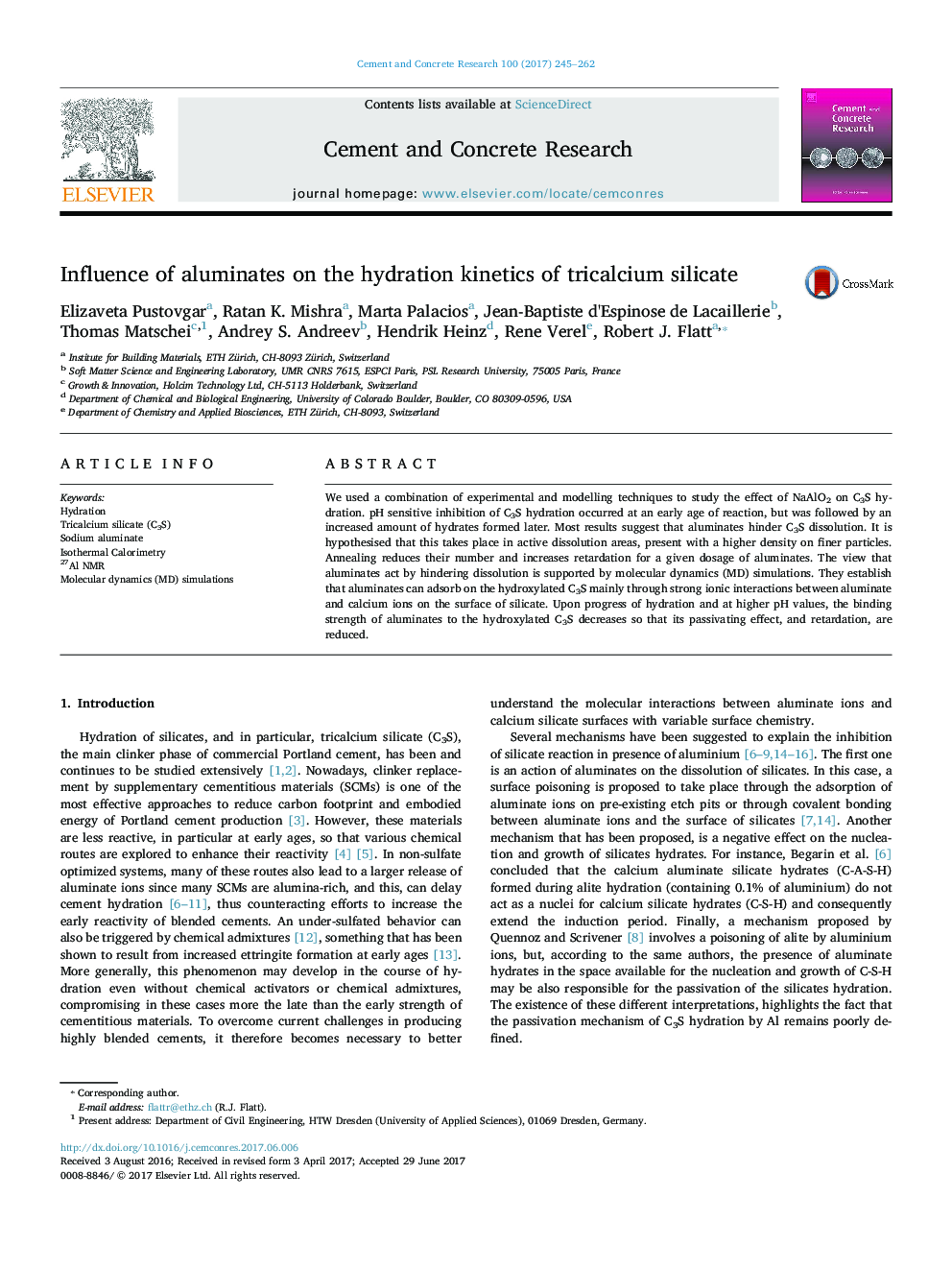| Article ID | Journal | Published Year | Pages | File Type |
|---|---|---|---|---|
| 5437024 | Cement and Concrete Research | 2017 | 18 Pages |
Abstract
We used a combination of experimental and modelling techniques to study the effect of NaAlO2 on C3S hydration. pH sensitive inhibition of C3S hydration occurred at an early age of reaction, but was followed by an increased amount of hydrates formed later. Most results suggest that aluminates hinder C3S dissolution. It is hypothesised that this takes place in active dissolution areas, present with a higher density on finer particles. Annealing reduces their number and increases retardation for a given dosage of aluminates. The view that aluminates act by hindering dissolution is supported by molecular dynamics (MD) simulations. They establish that aluminates can adsorb on the hydroxylated C3S mainly through strong ionic interactions between aluminate and calcium ions on the surface of silicate. Upon progress of hydration and at higher pH values, the binding strength of aluminates to the hydroxylated C3S decreases so that its passivating effect, and retardation, are reduced.
Related Topics
Physical Sciences and Engineering
Engineering
Industrial and Manufacturing Engineering
Authors
Elizaveta Pustovgar, Ratan K. Mishra, Marta Palacios, Jean-Baptiste d'Espinose de Lacaillerie, Thomas Matschei, Andrey S. Andreev, Hendrik Heinz, Rene Verel, Robert J. Flatt,
